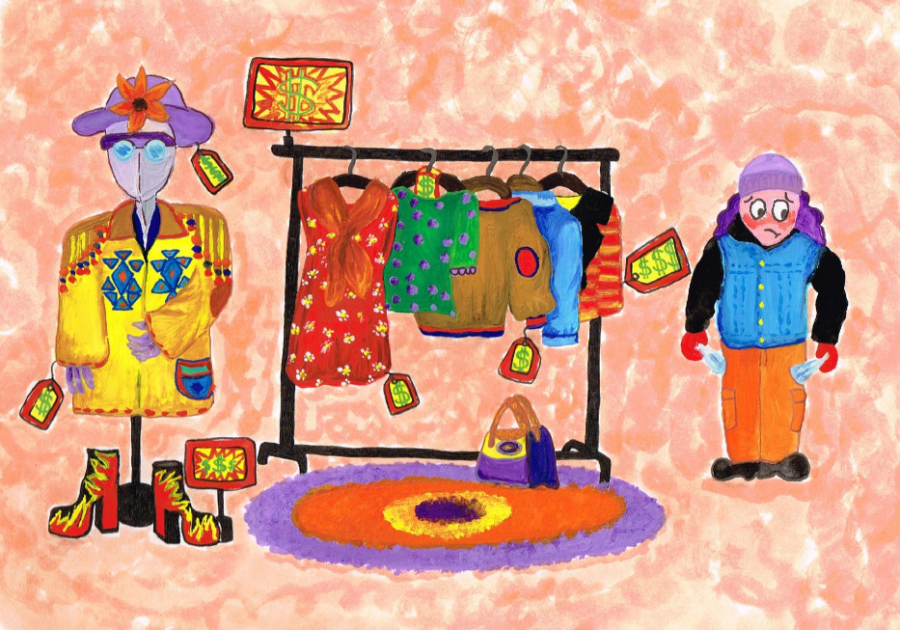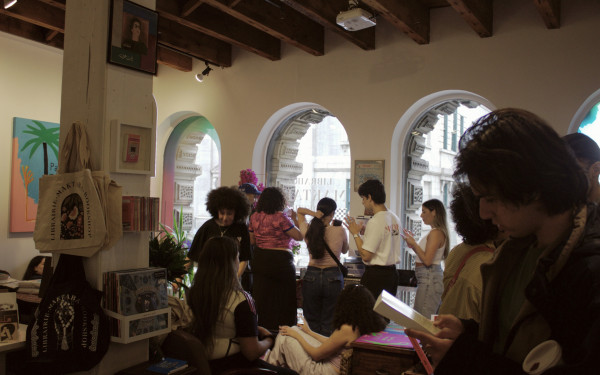Resellers are killing thrift culture
The threads of affordability are becoming increasingly frayed
When I was a toddler, I remember going to Value Village with my mom to buy clothes for myself and my siblings.
The economy was rocky; my parents were saving up to move to a bigger place while my mom was getting her degree in early childhood education. These were all reasons to shop second hand. Toys, books, shoes, clothes at lower prices, plus it was an added bonus that it was good for the environment.
The clothes came from the popular stores we could not afford at the time such as The Children’s Place or Justice, the only difference being the price. Considering the clothes were previously worn, there was a certain negative connotation associated with thrifting at the time.
Many felt very comfortable voicing their concerns about thrifting being dirty and risky as we were buying used clothes. This did not change my family's shopping habits and I still thrift to this day, but there has been a shift in the way people view thrifting.
The true essence of thrifting, once associated with sustainability and frugality, is now linked with the rapid turnover of styles dictated by the fast fashion industry.
This shift has consequences—not only for the frequency of shopping but also for the pricing within thrift stores. As demand for specific aesthetics surges, thrift stores are compelled to adjust their pricing to reflect consumers’ newfound appetite. Clothes are being bought, donated and replaced at an alarming rate. The more we are buying the more likely we will donate. The upsurge in donations is one of the big reasons prices are rising, especially in bigger cities.
Thrift stores, once havens for those with limited means, are now challenged by the commodification of aesthetics, driving prices higher and limiting access for those relying on affordability.
Enter the final boss: Depop.
The popular mobile shopping app allows users to buy and sell a wide array of secondhand items with a particular focus on fashion.
The platform embodies the paradox of contemporary thrifting. The very concept of affordability, a cornerstone of secondhand shopping, is eroded as Depop users, driven by trends, mark up prices of their so-called unique finds.
I'm not here to shame the fashion enthusiasts, especially not those who use Depop for good such as upcycling or offering vintage clothes for a wide range of sizes at reasonable prices. But perhaps it's time to acknowledge that not everyone is meant to be a Depop reseller, especially when your entire career relies on tripling the price of baby tees found in the baby section, then marking them as vintage to lure in buyers and make a substantial profit. At the end of the day, those who are buying from said resellers are also contributing to the problem.
The rise of Depop exemplifies how even within the realm of secondhand shopping, economic disparities persist, with unethical practices hindering access for those who need it the most.
In this intricate dance between trends and affordability, the lower class is disproportionately affected.
I remember thinking to myself “the end is near” when I saw a North Face puffer hanging from the ceiling of my local Value Village locked in a glass box with the price tag reading $200. Sure, the puffer originally retails for over $400, but I don’t think that justifies a triple digit price tag or the coat being locked up, especially not at a thrift store.
Exploring the shifts in fast fashion, changing aesthetics and the influence of platforms like Depop are crucial to understanding how thrifting goes beyond fashion, becoming an economic issue.
This article originally appeared in Volume 44, Issue 8, published January 16, 2024.


_600_832_s.png)




